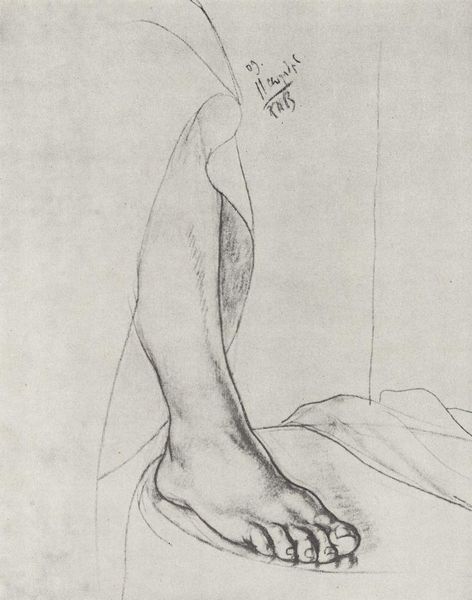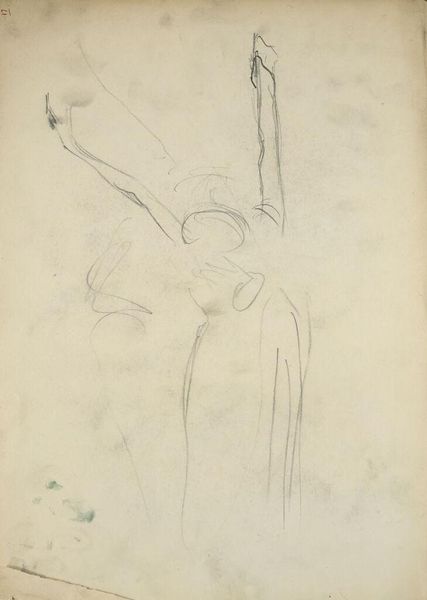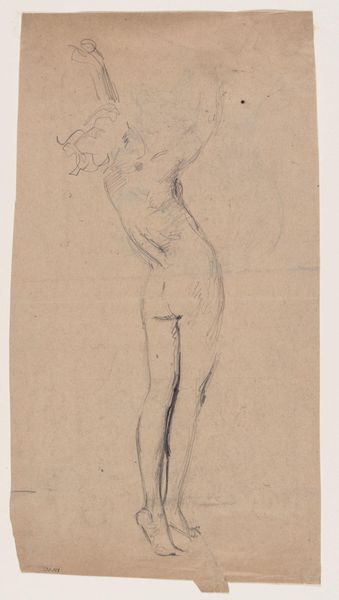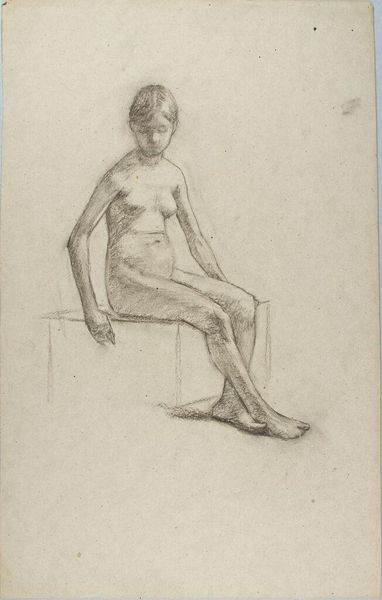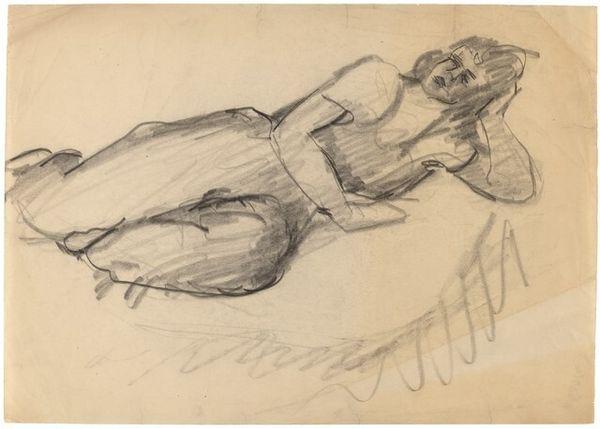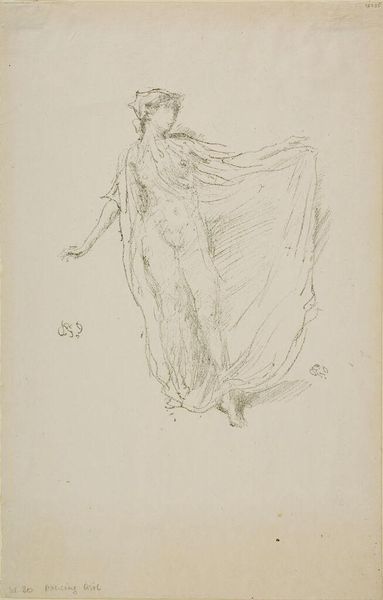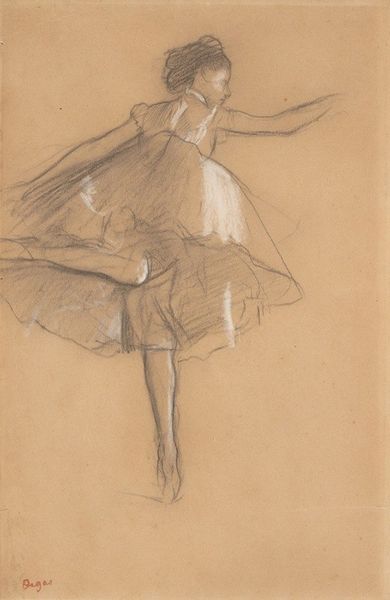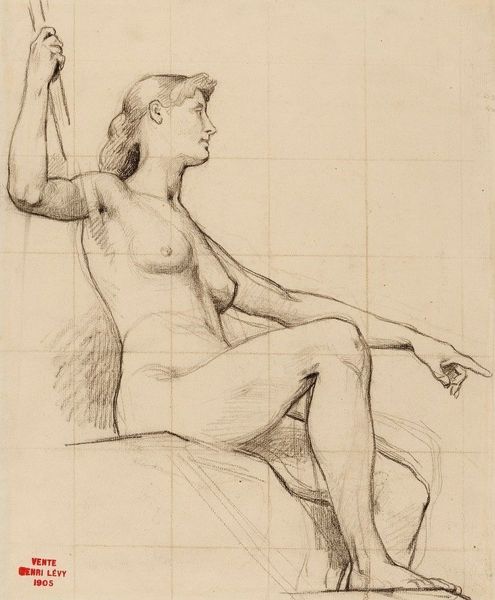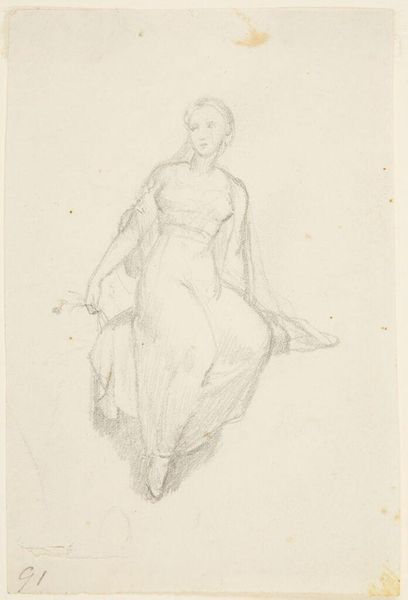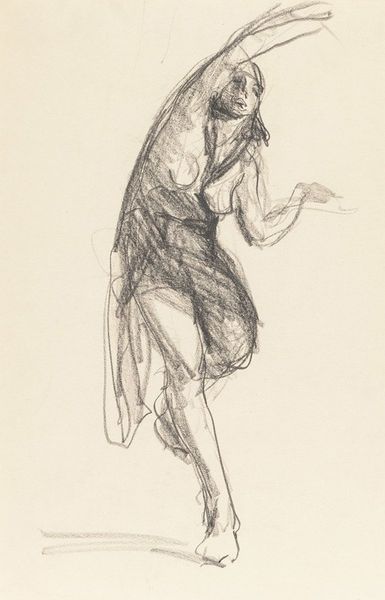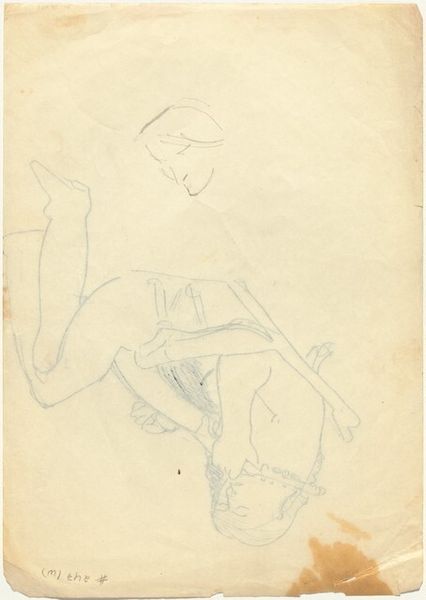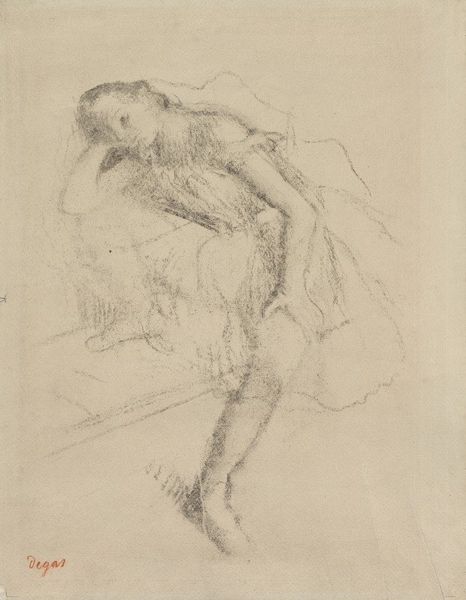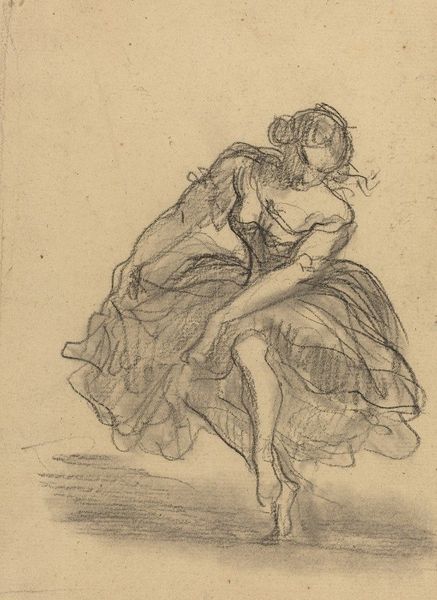
drawing, pencil, pastel
#
portrait
#
pencil drawn
#
drawing
#
impressionism
#
pencil sketch
#
landscape
#
figuration
#
detailed observational sketch
#
pencil
#
genre-painting
#
pastel
#
realism
Copyright: Public Domain: Artvee
Curator: Here we have Edgar Degas's "Dancer Adjusting Her Slipper," created around 1873. It’s a pencil drawing on paper. Editor: The immediate impression is one of incredible delicacy and lightness. The visible grid beneath the sketch adds a layer of transparency to the process, almost as if you’re looking directly at the artist’s working method. Curator: Precisely. Degas was deeply invested in representing labor, in the material act of creating art, but also in portraying the working lives of his subjects—in this case, the often brutal work of ballet dancers. This drawing offers us an interesting tension between high art and the very physical reality behind the performance. Editor: The composition is strikingly modern. It almost feels like a photograph, catching a fleeting moment. But what I find intriguing is the relationship between the ballerina and the institutions of ballet at the time. The Paris Opera, for example, held enormous social power. Curator: Yes, these institutions shaped not only the dancers' careers, but also their social standing. Degas, despite his privileged background, persistently sought to portray dancers not just as idealized figures but as workers within a structured environment, where their bodies were commodities. The making of art meets the commodification of labour. Editor: There's something voyeuristic about it, though, isn't there? We are offered an intimate glimpse into a private moment. It's this tension between public display and backstage reality that fascinated him, reflecting a larger shift in the socio-political landscape of 19th-century Paris. The ballet embodied certain class values and behaviors, a performative function he masterfully rendered in his work. Curator: Indeed, Degas highlights not just the grace of the dance, but also the effort, the sometimes ungainly poses required backstage. Even in this simple drawing, you can sense the weariness in her posture, and a sense of immediacy that captures her preparing, working. Editor: So, considering how Degas used materials to create that sense of immediacy coupled with a specific social lens to depict performance, this piece speaks volumes about art, labor, and societal hierarchies. Curator: Ultimately, the brilliance lies in Degas’s ability to intertwine technique, process and socio-economic observation.
Comments
No comments
Be the first to comment and join the conversation on the ultimate creative platform.
